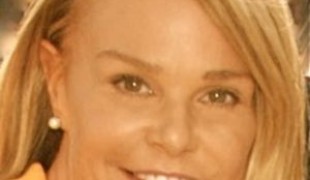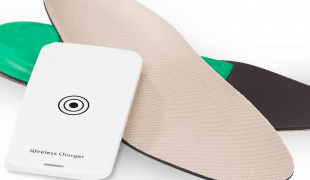- 5516
- 340
- 11
- 13
- 0
- Help Ukraine
About the solution
When she was 6-years-old. Leah Zelaya was diagnosed with a rare type of neuromuscular disease called scapuloperoneal spinal muscular atrophy (SPSMA). Due to the disease, Leah slowly began to lose muscle tissue and has difficulty with activities that require the use of fine motor skills. So, simple thing like getting dressed are a daily challenge for her.
"Things like buttoning and zipping can really hurt my fingers and take a really long time, and I also have trouble getting pants to fit over my leg braces. I’m someone that wants to be independent, but just getting dressed in the morning has been a barrier to that. I especially dreaded using zippers because of the weakness in my hands", Leah explained in an interview.
To help her overcome this challenge, Leah decided to take her love for fashion design and, with the help of the Open Style Lab nonprofit, she created an assistive device for zippers. The prototype she created is called “Eazy Zip” and it consist of a “donut-like” holder that is attached to a hook. Users can easily hold the device using the big hole inside the “donut” and then “put the hook through the zipper and (…) zip it up and down", Leah explains. With the Easy Zip, Leah can close a zipper in mere seconds – something that would sometimes take her almost 20 minutes without it.
The Easy Zip can also be used to open and close handbags, tie shoes or button a shirt. With her dream of becoming a fashion designer, Leah wanted Easy Zip to be fashionable so it she made it customizable. "It comes with... glitter glue and stickers, so anyone can make it reflect their personal style. We’re addressing challenges and creating hacks without sacrificing style."
As a starting point, the Eazy Zip will be sold as part of the Open Style Lab’s hackability toolkit.
Adapted from: https://www.elle.com/fashion/trend-reports/a33587986/leah-zelaya-accessi...
This solution shall not include mention to the use of drugs, chemicals or biologicals (including food); invasive devices; offensive, commercial or inherently dangerous content. This solution was not medically validated. Proceed with caution! If you have any doubts, please consult with a health professional.
DISCLAIMER: This story was written by someone who is not the author of the solution, therefore please be advised that, although it was written with the utmost respect for the innovation and the innovator, there can be some incorrect statements. If you find any errors please contact the patient Innovation team via info@patient-innovation.com
-
-
406
-
0
-
5470

Mother creates weighted cape to help her special needs daugther
CAREGIVING
Urban exploration
COMMUNICATION: Communicating, whether by speaking, listening, or other means
Post traumatic stress disorder (PTSD)
Anxiety
Body-Worn solutions (Clothing, accessories, shoes, sensors...)
Anxiety
Social withdrawal or isolation
Irritability or anger outbursts
Restlessness or feeling slowed down
Panic attacks
Racing thoughts
Feelings of guilt or worthlessness
Suicidal thoughts or behaviors
Obsessive thoughts or compulsive behaviors
Hallucinations (perceiving things that aren't there)
Sleep disturbances
Managing pain
Promoting self-management
Managing Neurological Disorders
Promoting inclusivity and social integration
Enhancing Mental Health
Improving Speech and Communication
To improve Treatment/Therapy
Preventing (Vaccination, Protection, Falls, Research/Mapping)
Raise awareness
Child and Adolescent Psychiatry
Neurology
Pediatrics
Physical Medicine and Rehabilitation
United States
-
-
-
257
-
0
-
3092

Mom creates clothing line for autistics
(SELF)-CARE: DRESSING: Dressing independently.
Autism
Body-Worn solutions (Clothing, accessories, shoes, sensors...)
Anxiety
Difficulty concentrating or making decisions
Irritability or anger outbursts
Restlessness or feeling slowed down
Panic attacks
Difficulty controlling impulses
Racing thoughts
Feelings of guilt or worthlessness
Obsessive thoughts or compulsive behaviors
Hallucinations (perceiving things that aren't there)
Changes in appetite or weight
Promoting self-management
Managing Neurological Disorders
Promoting inclusivity and social integration
To improve Treatment/Therapy
Preventing (Vaccination, Protection, Falls, Research/Mapping)
Caregiving Support
Child and Adolescent Psychiatry
General and Family Medicine
Neurology
Pediatrics
United States
-
-
-
412
-
2
-
9321

SmartSole GPS - Tracker for people with Alzheimer's, dementia and autism
COMMUNICATION: Communicating, whether by speaking, listening, or other means
WALKING: Walking
CAREGIVING
Alzheimer's Disease
Dementia (Alcoholic Dementia, Vascular Dementia)
Body-Worn solutions (Clothing, accessories, shoes, sensors...)
Difficulty coordinating movements
Loss of balance
Social withdrawal or isolation
Cognitive impairment
Memory loss
Irritability or anger outbursts
Confusion
Restlessness or feeling slowed down
Anxiety
Panic attacks
Difficulty controlling impulses
Mood swings
Feelings of guilt or worthlessness
Suicidal thoughts or behaviors
Hallucinations (perceiving things that aren't there)
Dizziness or lightheadedness
Fatigue
Restoring mobility
Promoting self-management
Building Supportive Community Relationships
Promoting inclusivity and social integration
Improving Speech and Communication
Preventing (Vaccination, Protection, Falls, Research/Mapping)
Raise awareness
Caregiving Support
Child and Adolescent Psychiatry
General and Family Medicine
Internal Medicine
Medical Genetics
Neurology
Pediatrics
Psychiatry
United States
-
 en
en